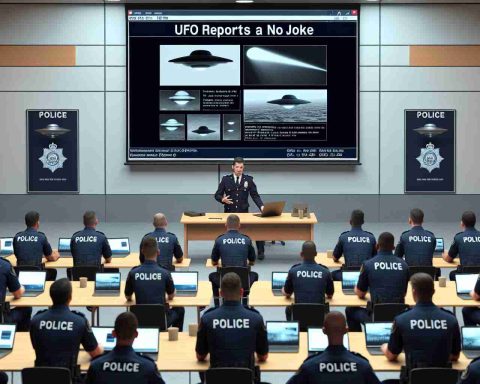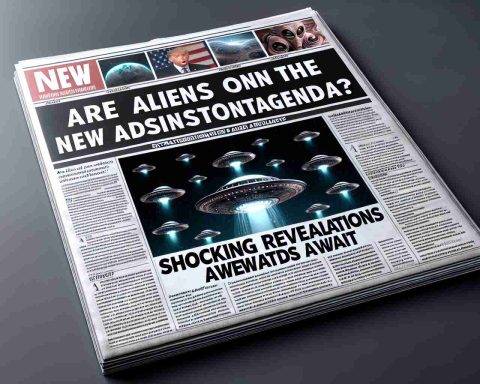Innovative Solutions to Combat Wildfire Threats
As firefighters in Los Angeles address the aftermath of devastating wildfires, the role of technology in monitoring and managing these disasters becomes increasingly vital. With advances in satellite technology, experts believe that enhanced observation capabilities can provide critical insights into fire risks.
Innovative satellite programs are emerging as space exploration becomes more affordable. These spacecraft can pinpoint dry areas susceptible to wildfires, monitor active flames, and analyze smoke and toxic emissions. According to climatologist Clement Albergel from the European Space Agency, this satellite data can significantly improve our understanding of wildfires.
There are two primary types of satellites playing important roles: Low Earth Orbit (LEO) satellites, which capture high-resolution images but offer limited coverage duration, and geostationary satellites, which provide continuous observation of specific areas but at lower resolution. Understanding the dynamics of these satellites is crucial for fire management.
With climate change increasing the frequency of wildfires near populated regions, initiatives like Brian Collins’ Earth Fire Alliance aim to deploy a new generation of satellites to enhance fire detection. His upcoming constellation will feature sensors capable of capturing details as fine as five meters, providing unprecedented information about smaller fires that often go undetected.
By harnessing these cutting-edge technologies, scientists and engineers aim to equip emergency responders with the tools necessary to mitigate wildfire impacts effectively. The future holds promise for stronger community resilience against these natural disasters, paving the way for smarter ecological management strategies.
Broader Implications of Advanced Satellite Monitoring in Wildfire Management
The integration of technology into wildfire management not only reshapes responses to fire events but also holds profound implications for society and the global economy. As climate change escalates, regions from California to Australia are grappling with increasingly frequent and intense wildfires. Investing in satellite monitoring could lead to a reduction in wildfire-related economic losses, which currently total billions each year. Enhanced early detection systems could significantly lower the costs associated with evacuations and property damage while protecting the livelihoods dependent on these landscapes.
Culturally, the perception of natural disasters is shifting. Communities once accustomed to sporadic wildfires are now facing a new reality of constant threat, altering local narratives about land stewardship and resilience. The ability to manage these risks effectively fosters a sense of security, essential for community cohesion and sustainable growth.
On the environmental front, proactive monitoring using satellite technology allows for more informed land management practices. Decisions based on accurate data can enhance vegetation management strategies, promoting ecosystems that are more resilient to fire. The long-term significance of these innovations lies in their potential to drive a broader societal embrace of sustainable practices, influencing policies on land use, urban planning, and even carbon emissions.
As we advance into this new technological era, the intertwined future of society, economy, and the environment hinges on our commitment to leveraging such innovative solutions for the greater good.
Transforming Wildfire Management: How Satellite Technology is Pioneering New Solutions
Innovative Solutions to Combat Wildfire Threats
As wildfires become a more frequent threat due to climate change, the integration of technology into fire management has never been more essential. Advanced satellite technology is emerging as a game changer, enabling better monitoring, detection, and management of these disasters.
Innovative Satellite Programs
Recent advancements in satellite technology have led to the development of innovative programs that enable real-time monitoring of fire risks. These programs allow researchers and firefighters to utilize data in unprecedented ways. For example, the combination of satellite imagery and artificial intelligence can predict fire behavior and spread patterns, significantly enhancing preparedness efforts.
Types of Satellites Used
There are two main categories of satellites that are pivotal in wildfire monitoring:
1. Low Earth Orbit (LEO) Satellites: These satellites offer high-resolution imagery, making them excellent for detailed observations of specific areas. Despite their ability to provide sharp images, their limited coverage duration means they cannot observe an area continuously.
2. Geostationary Satellites: In contrast, these satellites maintain a constant position relative to the Earth, providing ongoing monitoring of designated regions. While they offer this persistent presence, their lower-resolution images may not capture smaller fires effectively.
Understanding the balance between the capabilities of LEO and geostationary satellites is essential for effective wildfire management strategies.
Key Innovations in Fire Detection
One of the most promising initiatives is spearheaded by Brian Collins’ Earth Fire Alliance, which plans to deploy a cutting-edge constellation of satellites specifically designed for fire detection. The sensors in these satellites aim to capture details as fine as five meters, allowing for the identification of small fires that often go unnoticed until they escalate. This enhanced capability is expected to revolutionize the way wildfires are detected and managed.
How Satellite Technology Benefits Firefighters
– Real-Time Data: Emergency responders receive timely updates, enabling them to gauge fire intensity and direction more accurately.
– Predictive Analytics: Satellite data combined with AI can predict how fires will spread, helping to establish evacuation plans and resource allocation.
– Environmental Monitoring: Continuous monitoring of smoke and emissions helps assess air quality and public health risks, guiding community safety measures.
Use Cases and Applications
The application of satellite technology in wildfire management extends beyond immediate firefighting efforts. It is also crucial for:
– Policy Making: Data from satellites can inform governmental policies on land use and forest management.
– Community Preparedness: Satellite data can assist in community training programs, empowering residents to recognize fire risks.
– Environmental Research: Researchers can study wildfire impacts on ecosystems and develop better strategies for ecological preservation.
Limitations of Satellite Technology
Despite their potential, satellite systems face several limitations:
– High Costs: The establishment and maintenance of advanced satellite constellations can involve significant financial investment.
– Data Overload: With the increase in data collection, comprehending and analyzing such vast amounts of information can be challenging for analysts and decision-makers.
Conclusion
The future of wildfire management looks promising with technological innovations paving the way for improved detection and response strategies. As the effects of climate change continue to escalate the frequency and intensity of wildfires, the adoption of satellite technology will be crucial in shaping more resilient communities and efficient ecological management practices.
For more information on how these technologies are being implemented globally, visit European Space Agency and explore their ongoing projects to combat environmental threats.




















